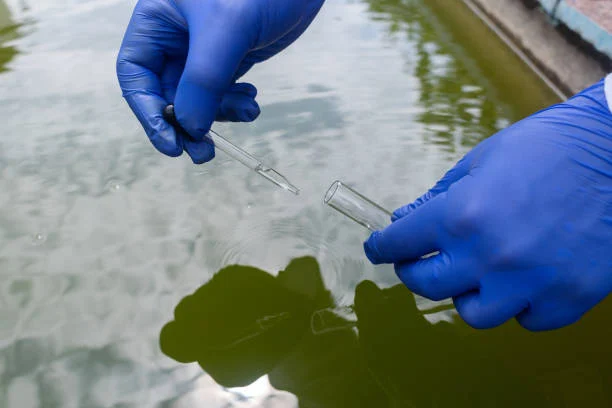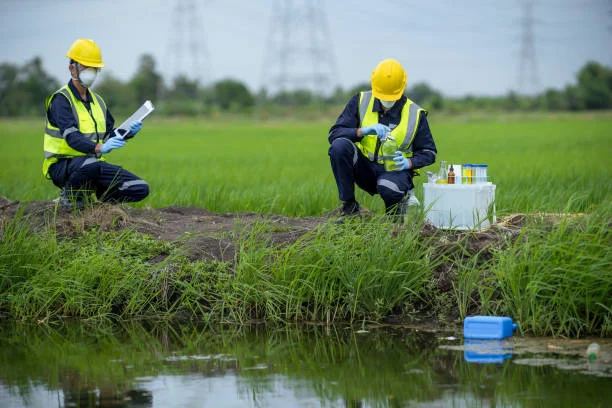
Introduction
Industrial wastewater often contains various toxic substances, among which Free cyanide (CN−) is of particular concern due to its high toxicity. Even in small doses, cyanide can be lethal, making the treatment of wastewater containing it a critical environmental issue. Stringent regulations are in place to control the discharge of cyanide - containing wastewater, aiming not only to meet standard requirements but also to recover as much cyanide as possible from tailings and factory effluents. Activated carbon has emerged as a promising material for the removal of free cyanide from wastewater, and this article will explore its applications, mechanisms, and influencing factors in detail.
Sources of Cyanide in Wastewater
High - concentration cyanide in wastewater mainly comes from industrial processes such as electroplating, cyanide - based gold extraction, gas washing and cooling water in coke ovens and blast furnaces, as well as some chemical, mineral processing, synthetic rubber, fiber, and dye industries. The cyanide concentration in these wastewaters can range from 1 - 180 mg/L or even higher.
Mechanisms of Activated Carbon in Removing Free Cyanide
Physical Adsorption
Activated carbon has a highly developed microporous structure and a large specific surface area, typically ranging from 500 to 3000 m²/g. This physical structure endows it with strong physical adsorption capabilities. Cyanide ions in wastewater can be adsorbed onto the surface of activated carbon through van der Waals forces. The large surface area provides numerous adsorption sites, allowing for the effective capture of free cyanide.
Chemical Adsorption and Catalytic Oxidation
In addition to physical adsorption, activated carbon can also participate in chemical reactions. When activated carbon adsorbs oxygen and water in the wastewater, it can generate hydrogen peroxide (H₂O₂) on its surface, with the activated carbon itself acting as a catalyst. In the presence of copper salts, the generated H₂O₂ can oxidize and decompose cyanide. The reaction mechanism is as follows:
Generation of H₂O₂: Oxygen and water are adsorbed on the activated carbon surface to form H₂O₂.
Oxidation of cyanide: Cyanide is oxidized by H₂O₂ under the catalytic action of copper salts, resulting in the decomposition of cyanide into less harmful substances.
Factors Affecting the Removal Efficiency of Activated Carbon
Initial Cyanide Concentration
The higher the initial concentration of free cyanide in wastewater, the greater the driving force for adsorption. However, as the adsorption capacity of activated carbon is limited, when the initial concentration exceeds a certain value, the removal efficiency may not increase proportionally. In some studies, it has been found that with an increase in the initial cyanide concentration, the amount of cyanide adsorbed per unit mass of activated carbon first increases and then levels off.
pH Value
The pH value of the wastewater significantly affects the adsorption of cyanide by activated carbon. Generally, under acidic conditions, the adsorption capacity of activated carbon for cyanide is relatively low. As the pH value increases, the adsorption capacity gradually increases. When the pH is in the alkaline range, especially above 11. the removal rate of cyanide can reach more than 95% within 30 minutes in some cases. This is because the speciation of cyanide in the solution changes with pH, and the form of cyanide ions is more conducive to adsorption on activated carbon under alkaline conditions.
Temperature
The adsorption of cyanide by activated carbon is an exothermic process. As the temperature rises, the adsorption capacity usually decreases. For example, in the case of copper - impregnated activated carbon, when mixed with cyanide solution, the adsorption effect of cyanide decreases with increasing temperature. This is because an increase in temperature promotes the desorption of adsorbed substances from the surface of activated carbon.
Stirring Time
Adequate stirring time is necessary to ensure that cyanide in the wastewater has sufficient contact with the activated carbon. In the initial stage, as the stirring time increases, the removal rate of cyanide increases rapidly. However, after reaching a certain time, the removal rate tends to stabilize, indicating that the adsorption process has reached equilibrium.
Applications of Activated Carbon in Treating Cyanide - Containing Wastewater
In the Gold Mining Industry
In gold mining, especially in cyanide - based gold extraction processes, a large amount of wastewater containing cyanide is generated. Activated carbon can be used to remove free cyanide from this wastewater. In addition to cyanide removal, activated carbon can also adsorb gold - cyanide complexes (such as Au(CN)₂⁻) in the wastewater. The adsorbed gold - cyanide complexes can be further processed to recover gold, achieving both environmental protection and resource recovery.
In the Electroplating Industry
Electroplating plants often use cyanide - containing solutions in the plating process, resulting in cyanide - contaminated wastewater. Activated carbon treatment can effectively reduce the cyanide content in the wastewater to meet discharge standards. Compared with some traditional treatment methods, such as alkaline chlorination, activated carbon treatment has the advantages of less secondary pollution and the potential for resource recovery.
Comparison with Other Treatment Methods
Alkaline Chlorination
Alkaline chlorination is a relatively mature method for destroying cyanides in wastewater. It uses chlorine - containing substances such as chlorine gas, liquid chlorine, or bleaching powder to oxidize cyanide into non - toxic carbon dioxide (CO₂) and nitrogen (N₂). However, this method may produce harmful by - products, and the operation process requires strict control of chlorine dosage and reaction conditions. In contrast, activated carbon treatment is a more environmentally friendly option with the ability to selectively adsorb cyanide and potentially recover valuable metals.
Hydrogen Peroxide Oxidation
Hydrogen peroxide oxidation can also be used to reduce the concentration of cyanide in wastewater. It can oxidize cyanide to a lower - toxicity level. However, hydrogen peroxide is an expensive reagent, and the process may require continuous addition of reagents, increasing the treatment cost. Activated carbon, on the other hand, has a relatively stable performance once it is properly selected and used, and its regeneration can also be considered to reduce costs.
Future Developments
Development of Modified Activated Carbon
To further improve the efficiency of activated carbon in removing free cyanide, research is being carried out on modified activated carbon. For example, impregnating activated carbon with different metals (such as copper, iron, etc.) can enhance its catalytic oxidation ability for cyanide. Different metal - loaded activated carbons can be optimized according to the specific characteristics of wastewater to achieve better treatment effects.
Combined Treatment Processes
Combining activated carbon treatment with other treatment methods is also a trend. For instance, combining activated carbon adsorption with biological treatment can first use activated carbon to reduce the high - concentration cyanide in wastewater to a level that is more suitable for biological treatment, and then use microorganisms to further decompose and remove the remaining cyanide - related substances. This combined process can take advantage of the strengths of different treatment methods and achieve more efficient and comprehensive Wastewater treatment.
Conclusion
Activated carbon shows great potential in the removal of free cyanide (CN−) from wastewater. Through physical adsorption and chemical reactions, it can effectively reduce the cyanide content in wastewater, meeting environmental discharge standards and even enabling resource recovery in some cases. Although there are still some areas that need to be improved, such as further optimizing the adsorption efficiency and reducing costs, with the continuous development of research on activated carbon modification and combined treatment processes, activated carbon will play an increasingly important role in the treatment of cyanide - containing wastewater in the future.
- Random Content
- Hot content
- Hot review content
- Collector BLK-301/Composite Flotating Active Matter ≥60%
- Sodium Sulfide Industry Grade 60% 30ppm/150ppm Yellow/ Red Flakes Na2s
- Hydrogen Peroxide
- Pharmaceutical Grade Zinc Acetate
- Lithium chloride, 99.0%,99.5%
- Isobutyl vinyl ether 98% high purity certified Professional producer
- 99.9% Purity Ethyl Acetate
- 1Discounted Sodium Cyanide (CAS: 143-33-9) for Mining - High Quality & Competitive Pricing
- 2Sodium Cyanide 98% CAS 143-33-9 gold dressing agent Essential for Mining and Chemical Industries
- 3Sodium Cyanide 98%+ CAS 143-33-9
- 4Anhydrous Oxalic acid 99.6% Industrial Grade
- 5Soda Ash Dense / Light 99.2% Sodium Carbonate Washing Soda
- 6Oxalic acid for mining 99.6%
- 7Calcium hydroxide Industrial Grade 90%
- 1Sodium Cyanide 98% CAS 143-33-9 gold dressing agent Essential for Mining and Chemical Industries
- 2High Quality 99% Purity of Cyanuric chloride ISO 9001:2005 REACH Verified Producer
- 3 High-Quality Sodium Cyanide for Leaching
- 4Powdery emulsion explosive
- 5Industry Grade Electron grade 98% Sulfuric Acid H2SO4 Sulphuric Acid Battery Acid Industrial Sulfuric Acid
- 6Colloidal emulsion explosive
- 7sodium hydrosulfide 70% flakes used Mining Industry











Online message consultation
Add comment: